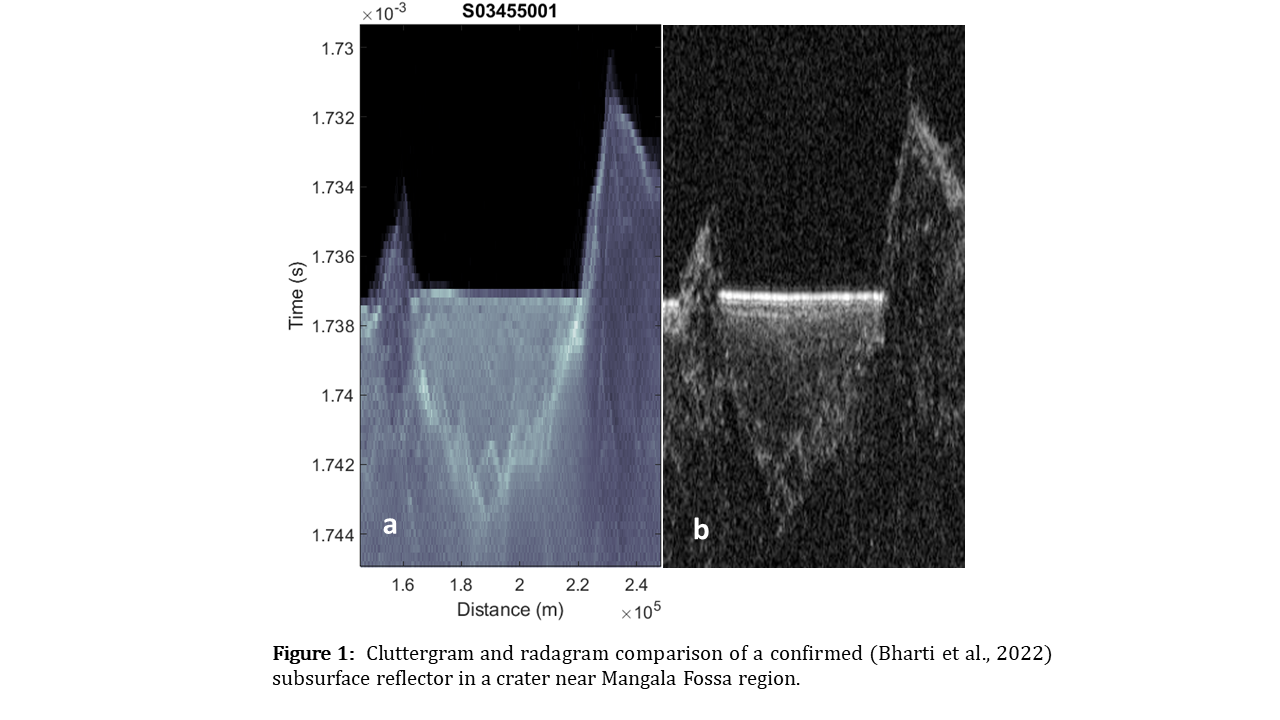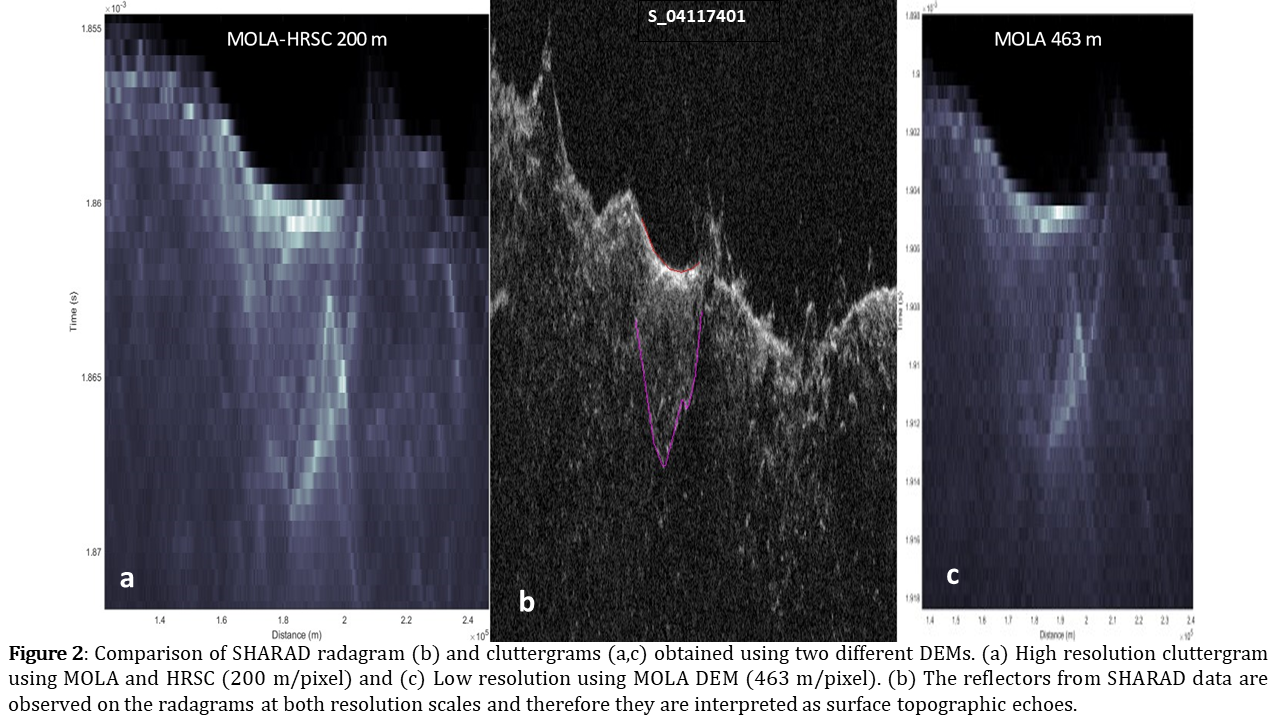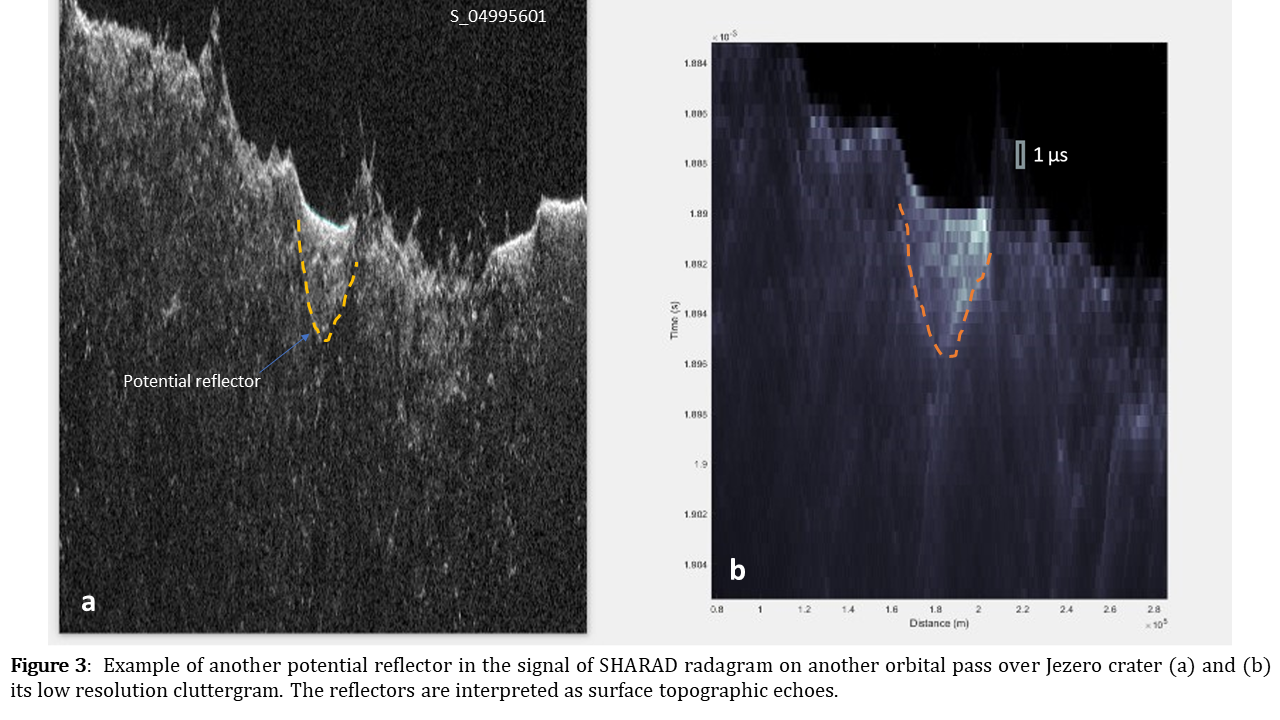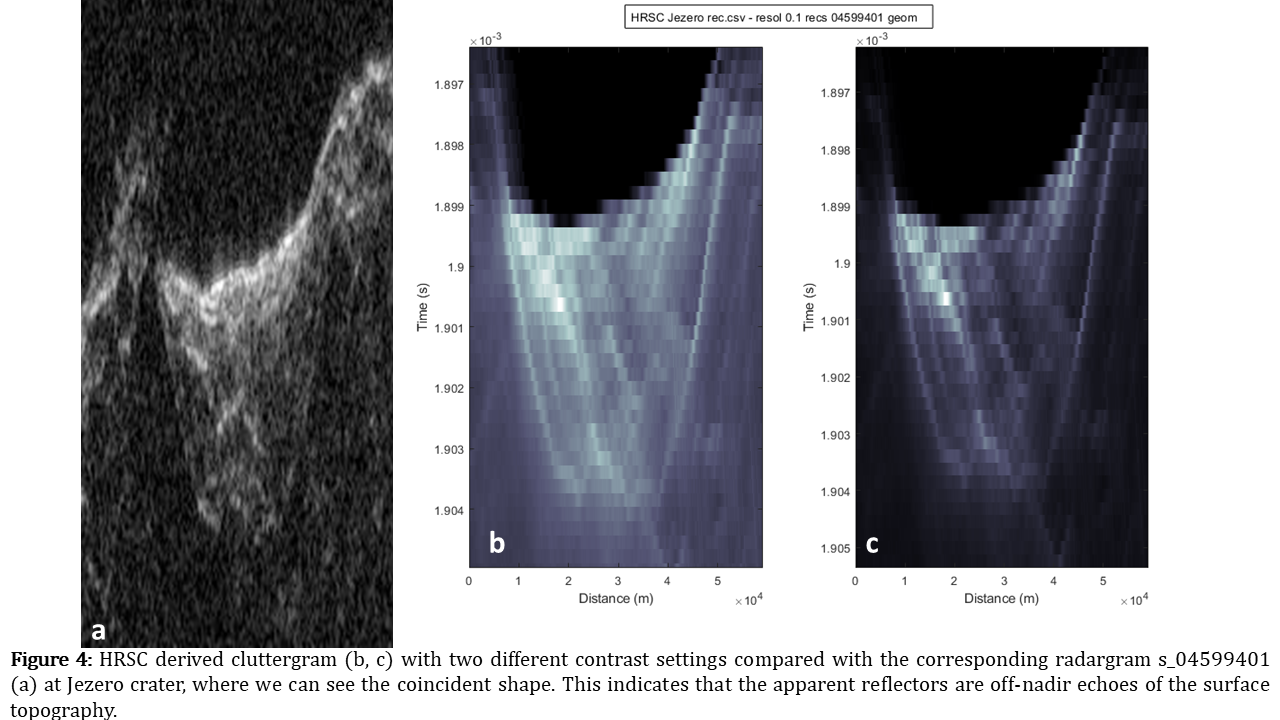No evidence of reflectors on Jezero radargrams
- 1Centro de Astrobiología (INTA-CSIC), Torrejón de Ardoz, Spain.
- 2School of Geosciences, University of Aberdeen, Meston Building, Kings College, Aberdeen, UK.
- 3Departamento de Geodinámica, Estratigrafía y Paleontología, Universidad Complutense de Madrid, Madrid, Spain.
Introduction:
The Perseverance rover landed at Jezero crater in 2021, close to the delta of an ancient river (1). This crater once hosted a paleolake (2). Previous studies of this system have concluded that the current fan-delta units were formed during the last phase of the Jezero fluvial activity, which postdates the formation of the olivine-rich unit and predates the formation of the current floor unit. From crater counts, the formation of the delta unit is assigned to an Early or Late Hesperian age (3.5 + 0.1/-0.3 Gy) (3). However, little is known about the processes that happened before and the plausible fluvial and igneous history that determined the evolution of the fresh impact crater. A comparative analysis with craters of similar size suggests that Jezero crater has experienced approximately 1 km of infilling compared to the morphologically fresh crater(4,5). The crater floor depth d can be calculated with the power-law scaling d = 0.372D0.375 + 0.072D0.62 (6) , which is valid for craters wider than 7 km. For Jezero D=49 km and the crater floor base should be at a depth of 2,404 m.
The purpose of this work is to investigate the plausible existence of preserved radar reflectors (7–12) that may indicate the geometry of crater filling layers. Recent research by other authors (7) have confirmed the usefulness of this approach to detect preserved layers in other craters. Here we shall apply a similar methodology to investigate it on Jezero crater.
Materials and methods:
SHARAD is a sounding radar experiment aboard the MRO mission designed to reveal the shallow structures of the Martian subsurface.(9). We visualize SHARAD radargrams using JMARS software. When a potential echo is detected as a bright feature, these signals have to be compared with the simulated cluttergrams, that are produced using the current surface topography, (MOLA-HRSC with 200m/pix. and MOLA with 463m/pix) in order to discriminate ghost signals. The protocol followed to investigate the plausible existence of buried reflectors on MARS using SHARAD data is the following one:
- Interpret visually the radargrams looking for subsurface reflectors in JMARS.
- Download the geometry data for each radargram under investigation and crop only the area of study, to reduce the computational time.
- Build the clutter simulation using the sets of topography data mentioned above. The data were downloaded from astrogeology. The DTM was selected only for the area of interest to reduce the overall computational resources. The clutter simulator estimates the reflected echoes from the topography based on the directivity pattern of the antenna, the distance from the source, and the orientation of the slope with respect to the angle of incidence (13)
- Compare the off-nadir reflections with the apparent bright reflectors.
- If a true reflector is detected, the wave travel times can be transformed to depth using Δh=c Δt/√ε where ε is the assumed permittivity of the materials above the reflector.
In order to test our methodology we validate it in a previously described case, in a crater near Mangala Fossa region (7). A confirmed reflector, which is distinguished in the radargram underneath the subsurface (Fig1-b) is not seen in the cluttergram (Fig1-a) confirming it as a true buried reflector. Any other bright feature that appears in both images is an artifact produced by the radar echo of the surface.

Next we apply this methodology to Jezero crater. We observe in Figure 2-b an example of a potential reflector. To confirm or discard the nature of this reflector we compare with the cluttergrams at different resolution scales, in Figure 2-a and 2-c. The reflectors from SHARAD data are observed on the radagrams at both resolution scales and therefore they are interpreted as artifacts produced by surface topographic echoes. Similar examples are shown in Figures 3 and 4.



Conclusions:
Our preliminary analysis, can discard the existence of true recognizable reflectors at Jezero. Assuming ε= 6 (14) and a crater filling depth of about 1 km, a crater-base reflector should have given an echo at a single travel time less or equal than 8165 ns. This distance is covered in our investigation and therefore this analysis suggests that SHARAD measurements can neither detect any reflector within the crater filling nor distinguish the crater floor. This may be due to the presence of strong off nadir reflections produced by the surface topography that may overwrite true reflectors. Moreover, gradual variations between layers can reduce their reflection coefficients making them transparent to radar. Future studies will investigate the existence of subsurface reflectors in environments with higher signal to clutter ratio, such as paleolake environments with smoother surfaces.
Acknowledgments: We are grateful to the PDS, SHARAD and HRSC for the materials and JMARS and QGIS for the software. The work of F. Mansilla is supported by the grant PRE2020-09170 founded by MCIN/AEI/10.13039/501100011033. Spanish State Research Agency (AEI) Project No. MDM‐2017‐0737 Unidad de Excelencia “María de Maeztu”‐ Centro de Astrobiología (INTA‐CSIC) and the Spanish Ministry of Science and Innovation (PID2019‐104205GB‐C21).
References:
- N. Mangold et al., Science. 374, 711–717 (2021).
- C. I. Fassett, J. W. Head, Geophys. Res. Lett.32, 14, (2005)
- N. Mangold et al., Astrobiology. 20, 994–1013 (2020).
- S. C. Schon, et al., Planet. Space Sci. 67, 28–45 (2012).
- B. D. Boatwright, J. W. Head, Planet. Sci. J. 2, 52 (2021).
- L. Pan, et al., Nat. Commun. 10, 4257 (2019).
- R. R. Bharti, et al., Icarus. 371, 114713 (2022).
- I. Ganesh, L. M. Carter, I. B. Smith, J. Volcanol. Geotherm. Res. 390, 106748 (2020).
- R. Seu et al., J. Geophys. Res., 112, E5 (2007).
- M. N. Simon, et al., J. Geophys. Res. Planets. 119, 2291–2299 (2014).
- T. R. Watters et al., Science. 318, 1125–1128 (2007).
- S. Xiong et al., Earth Space Sci. 8 (2021).
- P. Choudhary, et al., IEEE Geosci. Remote Sens. Lett. 13, 1285–1289 (2016).
- S. Eide, et al., IEEE J. Sel. Top. Appl. Earth Obs. Remote Sens. 14, 2484–2493 (2021).
How to cite: Mansilla, F., Zorzano, M. P., Giannakis, I., and Ruiz, J.: No evidence of reflectors on Jezero radargrams , Europlanet Science Congress 2022, Granada, Spain, 18–23 Sep 2022, EPSC2022-460, https://doi.org/10.5194/epsc2022-460, 2022.

